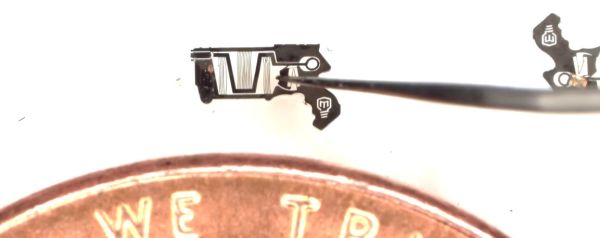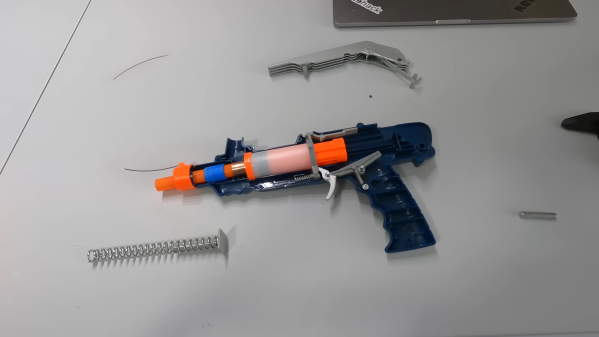Nerf blasters typically fire small foam darts or little foam balls. [Michael Pick] wanted to build something altogether more devastating. To that end, he created a rocket launcher with an advanced air burst capability, intended to take out enemies behind cover.
Unlike Nerf’s own rocket launchers, this build doesn’t just launch a bigger foam dart. Instead, it launches an advanced smart projectile that releases lots of smaller foam submunitions at a set distance after firing.
The rocket launcher itself is assembled out of off-the-shelf pipe and 3D printed components. An Arduino Uno runs the show, hooked up to a Bluetooth module and a laser rangefinder. The rangefinder determines the distance to the target, and the Bluetooth module then communicates this to the rocket projectile itself so it knows when to release its foamy payload after launch. Releasing the submunitions is achieved with a small microservo in the projectile which opens a pair of doors in flight, scattering foam on anyone below. The rockets are actually fired via strong elastic bands, with an electronic servo-controlled firing mechanism.
We’ve featured some great Nerf builds over the years, like this rocket-blasting robot.
Continue reading “Building A Nerf-like Rocket Launcher With Airburst Capability”

















